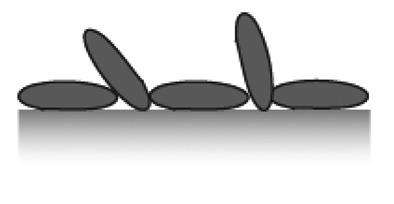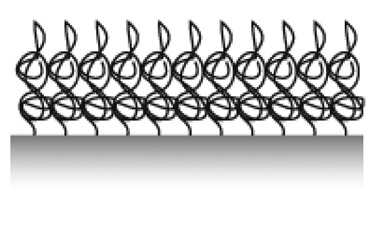Table 2.
Combinations of anchors and spacers that render substrates inert to non-specific biomolecular binding.
| Type | Graphic Example | Advantages | Disadvantages | Surface Materials | Examples |
|---|---|---|---|---|---|
| Proteins |

|
easy to handle general biocompatible | unspecific to surface material, surface patches exposed, non-specific binding and orientation | relatively general | bovine serum albumin fibrinogen milk proteins |
| Self-assembled monolayers |

|
applicable to many surface materials receptor exposure good | small substrate defects alter function, low resistance to fouling | Au, Ag, SiO2, TiO2, Al2O3 |
OEG-thiols OEG-silanes |
| Surface-grafted polymer brushes |

|
surface chemistry specific grafting grafting from of any spacer mix and match functionality by grafting to | difficult to control surface density, low availability of functional group | Au, Ag, SiO2, TiO2, Al2O3, Fe3O4, Fe2O3 |
PEG-thiols PEG-silanes PEG-DOPA3 PEG-nitrocatechols |
| Physisorbed graft copolymer brushes |

|
applicable to many surface materials low defect intensity known density of functional groups | large surface area per macromolecule, low availability of functional group, non-specific surface attachment | Au, Ag, SiO2, TiO2, Nb2O5, Si3N4, Al2O3, |
PLL-g-PEG PLL-g-PMOXA Pluronics® |
| Amphiphilic membranes |

|
cell membrane mimic multivalancy through lateral mobility | cannot be dried, limited to certain surface materials | SiO2, TiO2, ITO, hydrophobic surfaces |
Lipids block-co-polymers |
